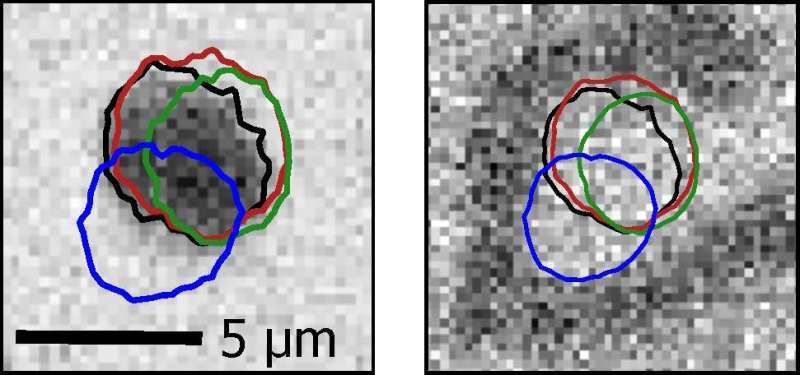GAMING
Johannes Gutenberg University produces insight into the pinning effects of skyrmions for non-conventional supercomputing
We know hurricanes are mainly from worldwide weather phenomena, but they have started to occur more frequently also in Europe. However, when researchers use an optical Kerr microscope to zoom in on thin films of magnetic material, they see something related happening in the microcosm, given the right conditions: a sort of micro-scale magnetic hurricane. Physicists call these whirlwind-like magnetic structures skyrmions. The idea is to use this phenomenon for data storage or processing devices. For those applications, the motion of the mini-whirlwinds, which themselves act as stand-alone particles or so-called quasi-particles, has to be exploited. The skyrmions can move both due to temperature effects as well as by electrical currents. While more powerful "pushes" are needed for certain applications, random thermal motion is desirable for other ones, such as in non-conventional supercomputing. 
Pinning: When skyrmions meet the "obstacle course"
The nanometer-thin material films in which skyrmions can be observed are never perfect. As a result, these little magnetic whirlwinds can get stuck – an effect known as pinning. In most cases, they get so caught up that they are unable to escape. It's like trying to roll a small ball on the surface of an old table covered by scratches and gouges. Its path will be deflected and if there is an indentation large enough, the ball gets stuck. When skyrmions get trapped like this it poses challenges, particularly for applications that rely on the thermal movement of the quasi-particles. Pinning can lead to a complete standstill of this movement.
Understanding the fundamentals of pinning
"I have used a Kerr microscope to study skyrmions of just a micrometer in size – or, to be more precise, their pinning behavior," said Raphael Gruber, a doctoral candidate and member of the research team of Professor Mathias Kläui at Johannes Gutenberg University Mainz (JGU). There are already several theories as to how the effect occurs. Most of them concentrate on looking at skyrmions as a whole; in other words, they focus on the motion of their centers. There even have been a few experimental studies but in the presence of strong pinning where the skyrmions are unable to move at all. "My investigations are based on weak pinning allowing the skyrmions to move a bit and keep hopping until they get caught up somewhere else," Gruber elaborated. His results provide interesting new insights. "Skyrmions do not fall like balls into a hole," the experimental physicist summarized. "What happens is that it sticks to something at its surface."
Research group leads Professor Mathias Kläui is also delighted by the new findings, which are the result of many years of collaboration with groups from theoretical physics: "Under the aegis of the Skyrmionics Priority Program funded by the German Research Foundation and the Spin+X Collaborative Research Center, we have been investigating the dynamics of spin structures together with our counterparts working in the field of theoretical physics. I am pleased to say that this very productive collaboration, especially also between postgraduates in the active groups, has generated these fascinating results." Dr. Peter Virnau, who heads up a theoretical physics group in Mainz, added: "Skyrmions are a relatively new aspect in my research. My introduction to them was made possible by funding provided by the State of Rhineland-Palatinate through the TopDyn – Dynamics, and Topology Top-Level Research Area at JGU. I am glad our numerical methods could contribute to a better understanding of the experimental data."
